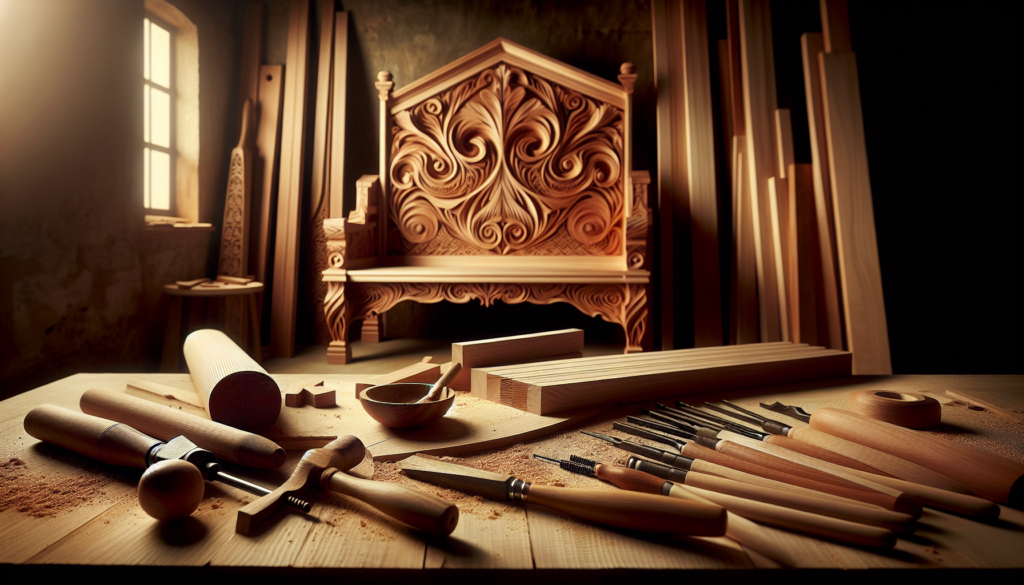So, you’ve been thinking about adding a wooden bench to your outdoor space, but you’re not quite sure where to start? Well, you’re in the right place! In this article, we’ll guide you through the process of designing and building a wooden bench from scratch. From choosing the right materials to adding the finishing touches, we’ve got all the tips and tricks you need to create a beautiful and functional bench that will enhance your outdoor area. So grab your tools and let’s get started on this exciting DIY project!
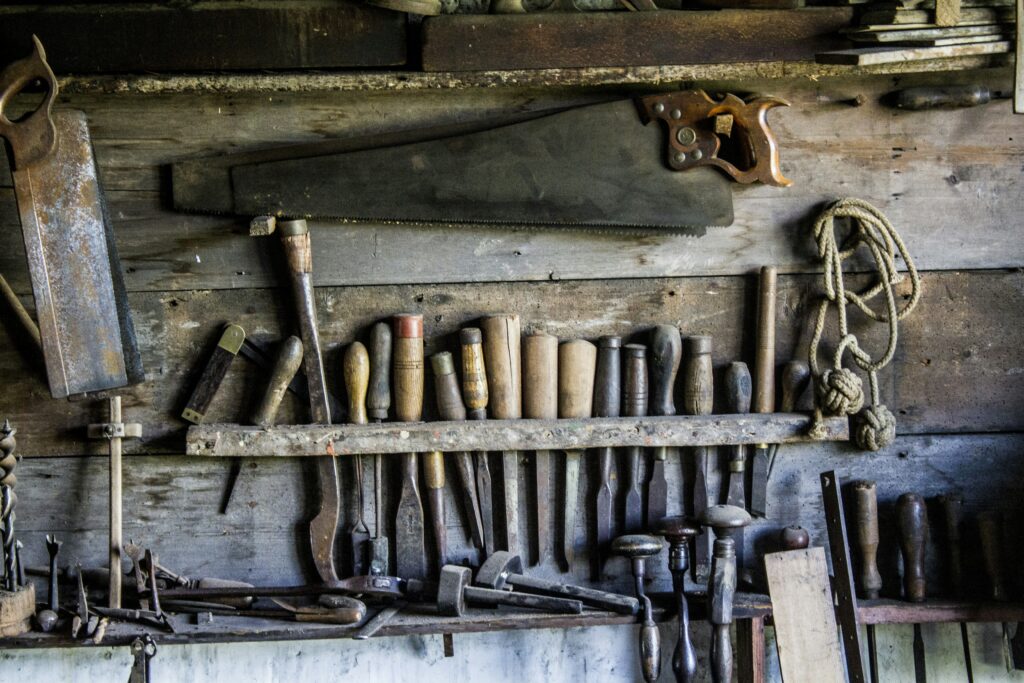
Choosing a Design
When designing a wooden bench, the first step is to determine its purpose. Are you planning to use it as outdoor seating for your garden or patio? Or do you need a bench for your entryway or living room? Knowing the purpose will help you decide on the style and size of the bench.
Next, consider the available space where you intend to place the bench. Measure the area to ensure that the dimensions of the bench will fit comfortably. Taking into account the surrounding elements, such as other furniture or plants, will also help you choose a design that complements the overall aesthetic.
Explore different styles of benches to find inspiration. Whether you prefer a classic, traditional look or a more modern and sleek design, there are countless options to choose from. Consider the overall theme or decor of your space and select a style that aligns with it.
Lastly, when choosing the materials for your bench, consider factors such as durability, weather resistance, and cost. Common choices for wooden benches include hardwoods like teak or cedar, as they are naturally resistant to rot and insects. Softwoods like pine or fir may be more affordable options.
Gathering Tools and Materials
Before you begin building your wooden bench, gather all the necessary tools. Essential tools for this project include a tape measure, a circular saw or miter saw, a drill, a sander, clamps, and various woodworking hand tools. These tools will help you to measure, cut, shape, and assemble the pieces of your bench.
In addition to the tools, you will also need the required materials. This typically includes the wood for the bench, screws or nails for assembly, and wood glue for added strength. Depending on the design and your preferences, you may also want to gather optional additions such as decorative elements, cushions, or a waterproofing finish.
Measuring and Planning
Once you have gathered your tools and materials, it’s time to measure and plan your bench. Determine the dimensions of the bench based on its purpose and the available space. Consider factors such as the number of people you want the bench to accommodate and the desired comfort level.
Create a blueprint or sketch of your bench design. This will serve as a visual guide and help you stay organized during the construction process. Make sure to include precise measurements and notes on each component of the bench, such as the legs, seat slats, and supports.
Calculate the quantities of wood and other materials needed for your bench. This will ensure you have enough supplies and help you avoid any unnecessary trips to the store. Take into account any recommended material allowances for cutting and assembly, and consider purchasing some extra materials for future repairs or replacements.
Preparing the Wood
Before you start cutting and assembling the wood, it’s essential to choose the right type of wood for your bench. Consider factors such as the wood’s durability, resistance to rot and insects, and its appearance. Hardwoods like teak, oak, or mahogany are popular choices due to their strength and longevity.
Once you’ve chosen the wood type, select appropriate boards for your bench. Look for straight, flat, and well-dried boards without any knots or cracks. If possible, purchase boards that are slightly longer and wider than your required measurements to allow for trimming and any potential mistakes.
To prevent warping or twisting of the wood, it’s important to let the boards acclimate to the surrounding environment. This can be done by storing the wood in the location where the bench will be placed for a few days before construction. This will help the wood adjust to the temperature and humidity, reducing the risk of future warping.
Next, cut the wood to the desired size using a circular saw or miter saw. Follow the measurements from your blueprint and take your time to ensure clean and accurate cuts. After cutting, sand the surfaces of the wood to smooth any rough edges and create a polished finish. This will help prevent splinters and enhance the overall appearance of your bench.
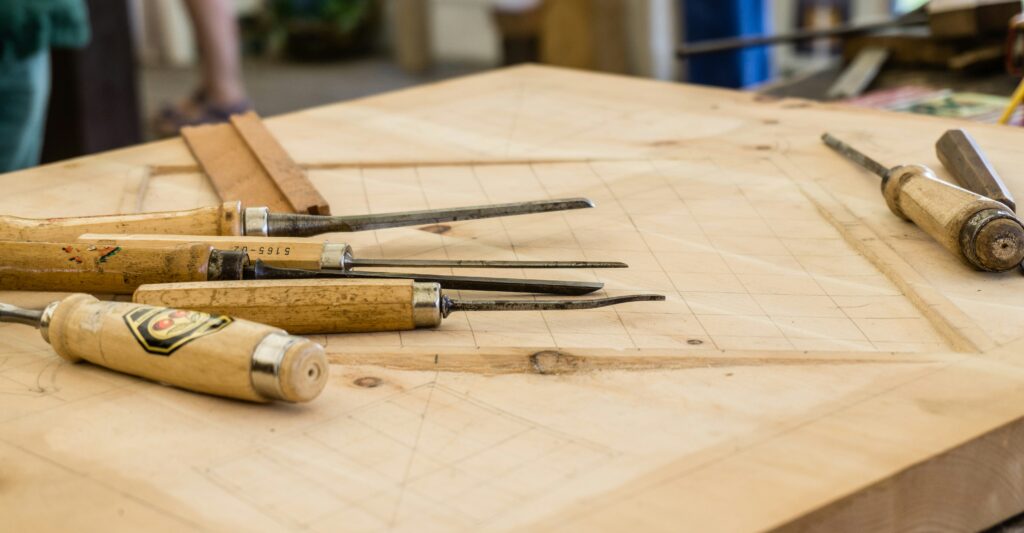
Constructing the Base
The base of your wooden bench provides the foundation and support for the entire structure. Choose a base design that suits your aesthetic preferences and aligns with the purpose of the bench. Common choices include simple four-leg designs or more intricate X-shaped or A-frame designs.
Start by cutting and assembling the legs of the bench. Measure and mark the desired height for the legs on each board, then make precise cuts to achieve uniform length. Once the legs are cut, use wood glue and screws or nails to attach them to the seat supports. Take care to ensure the legs are aligned properly and securely attached.
Next, join the aprons and supports of the bench. The aprons are the horizontal boards that connect the legs and provide additional stability. Measure and cut the aprons to the required length, then attach them to the legs with screws or nails. Additionally, attach cross supports between the aprons for added strength and rigidity.
To enhance the structural integrity, consider installing reinforcements such as corner brackets or metal braces at the joints of the bench. These reinforcements will provide extra support and prevent any wobbling or loosening of the components over time. Make sure to secure the base firmly to ensure a stable and durable bench.
Building the Seat
The seat of your wooden bench is where you and your guests will spend the most time, so it’s important to ensure its dimensions, construction, and comfort are well thought out. Determine the seat dimensions based on the desired number of people it will accommodate and the available space.
Create seat slats by cutting straight boards to the required length. The number of slats will vary depending on the bench size and your preference for spacing. Attach the slats to the base using screws or nails, making sure they are evenly spaced and aligned. For added support, consider adding braces underneath the seat slats.
To ensure stability and comfort, it’s important to incorporate appropriate support braces. These are additional boards that run underneath the seat slats and across the aprons, providing extra strength and preventing sagging. Measure and cut the braces to fit securely between the legs and aprons, then attach them with screws or nails.
Before moving on to the next step, take a moment to test the stability and comfort of the bench. Sit on it and apply some pressure to ensure it doesn’t wobble or feel weak. Making any necessary adjustments at this stage will save you time and effort later on.
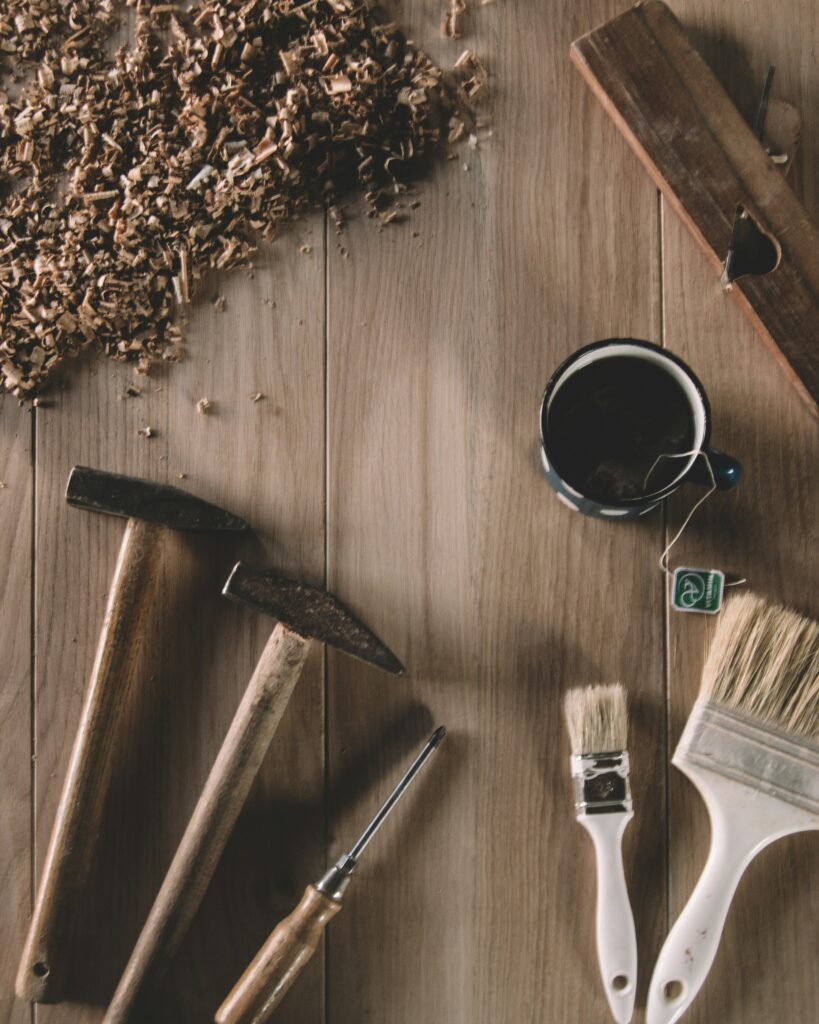
Applying Finishes and Paint
To protect your wooden bench and enhance its appearance, applying finishes and paint is essential. Start by preparing the wood surface by sanding it lightly with fine-grit sandpaper. This will help remove any remaining roughness and allow the finishes to adhere properly.
Choose the right finish for your bench based on its intended use and the type of wood you have. Options include varnish, polyurethane, or oil-based finishes. Each finish has its own advantages and characteristics, so consider factors such as durability, ease of application, and the desired level of shine.
Apply a protective coat of finish to the entire bench, ensuring you cover all exposed surfaces. Follow the manufacturer’s instructions for application and drying times, and consider applying multiple coats for added protection. Allow the finish to dry completely before proceeding to the next step.
If you prefer a colored or painted bench, this is the time to choose a suitable paint color and apply it according to your desired style. Make sure to use paint specifically designed for outdoor or indoor use, depending on where your bench will be placed. Apply multiple coats if necessary, allowing proper drying time between each coat.
Adding Decorative Elements
To personalize your wooden bench and make it stand out, consider adding decorative elements. Think about ornamental details that complement your overall design aesthetic. This could include carved patterns, routed edges, or decorative moldings that enhance the visual appeal of the bench.
If you have the skills or access to engraving or carving tools, incorporating artistic designs into the wood can create a unique and eye-catching bench. Whether it’s a floral motif, geometric patterns, or even personalized initials, these engravings or carvings add a touch of craftsmanship and individuality to your bench.
Another option to consider is adding a backrest design to your bench. This can provide additional support and comfort, especially if you plan on using the bench for extended periods. Backrest designs can include vertical slats, curved patterns, or even intricate latticework, depending on your preferences and woodworking abilities.
Lastly, storage compartments can be a useful addition to your bench, especially if you have limited space. Incorporate hinged or removable lids to create hidden storage under the seat. This can be a convenient solution for storing items such as cushions, gardening tools, or outdoor toys, depending on the location of your bench.
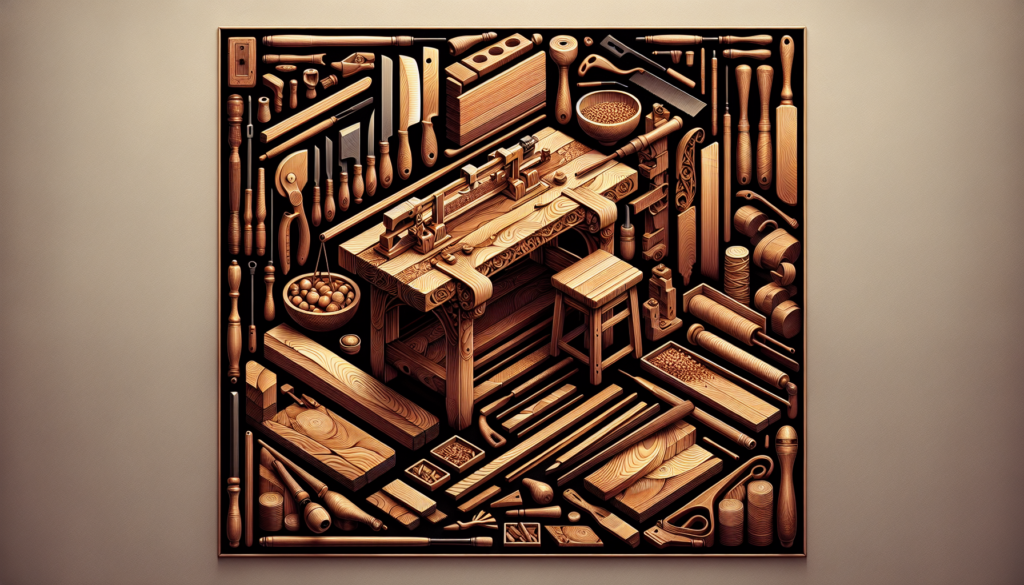
Ensuring Safety and Durability
As you build your wooden bench, it’s important to prioritize safety and durability. Using proper joinery techniques is key to ensuring the bench’s structural integrity. Avoid relying solely on nails or screws and consider incorporating dovetail, mortise and tenon, or dowel joints for added strength and stability.
To protect your bench from weather damage, apply a waterproofing solution. This is especially important if the bench will be placed outdoors. Waterproofing solutions can prevent the wood from absorbing moisture, which can lead to rot and decay over time. Follow the manufacturer’s instructions for application and reapplication as needed.
Regularly check the stability and weight capacity of your bench, especially if it will be used frequently or accommodate multiple people. Inspect for any signs of loose or worn-out components and make any necessary repairs promptly. Ensuring the bench remains sturdy and secure is crucial for the safety and enjoyment of its users.
Protect your bench against insects or rot by applying a wood preservative or insecticide. These treatments can prevent potential damage caused by termites, beetles, or other pests. Consider reapplying the treatments periodically to maintain the bench’s resistance and longevity.
Maintenance and Care
To prolong the lifespan of your wooden bench, regular maintenance and care are necessary. Start by regularly cleaning the bench to remove dirt, dust, and any other debris. Use a mild soap or wood cleaner and a soft-bristle brush or cloth to gently scrub the surface. Rinse thoroughly with clean water and allow it to dry completely.
Periodically inspect your bench for any signs of wear, damage, or weakness. Check for loose screws or nails, cracks in the wood, or any other issues that may compromise the bench’s stability. Address any repairs promptly to prevent further damage and ensure the safety of those using the bench.
Protect your wooden bench against harsh weather conditions by using covers or moving it to a sheltered spot during extreme weather. Excessive exposure to rain, snow, or direct sunlight can cause the wood to deteriorate more rapidly. Consider using weather-resistant finishes or coatings for added protection against the elements.
Over time, the wood on your bench may start to show signs of wear or lose its original luster. Refinishing the bench can breathe new life into it. Strip any existing finishes or paint, sand the wood surfaces, and apply new finishes or paint as desired. This will revitalize the bench’s appearance and help maintain its longevity.
Designing and building a wooden bench can be a rewarding and fulfilling project. By carefully considering the purpose, space, style, and materials, you can create a bench that not only fits seamlessly into your space but also provides comfort and aesthetic appeal for years to come. With proper tools, measurements, construction techniques, and regular maintenance, your wooden bench can become a cherished piece of furniture.
